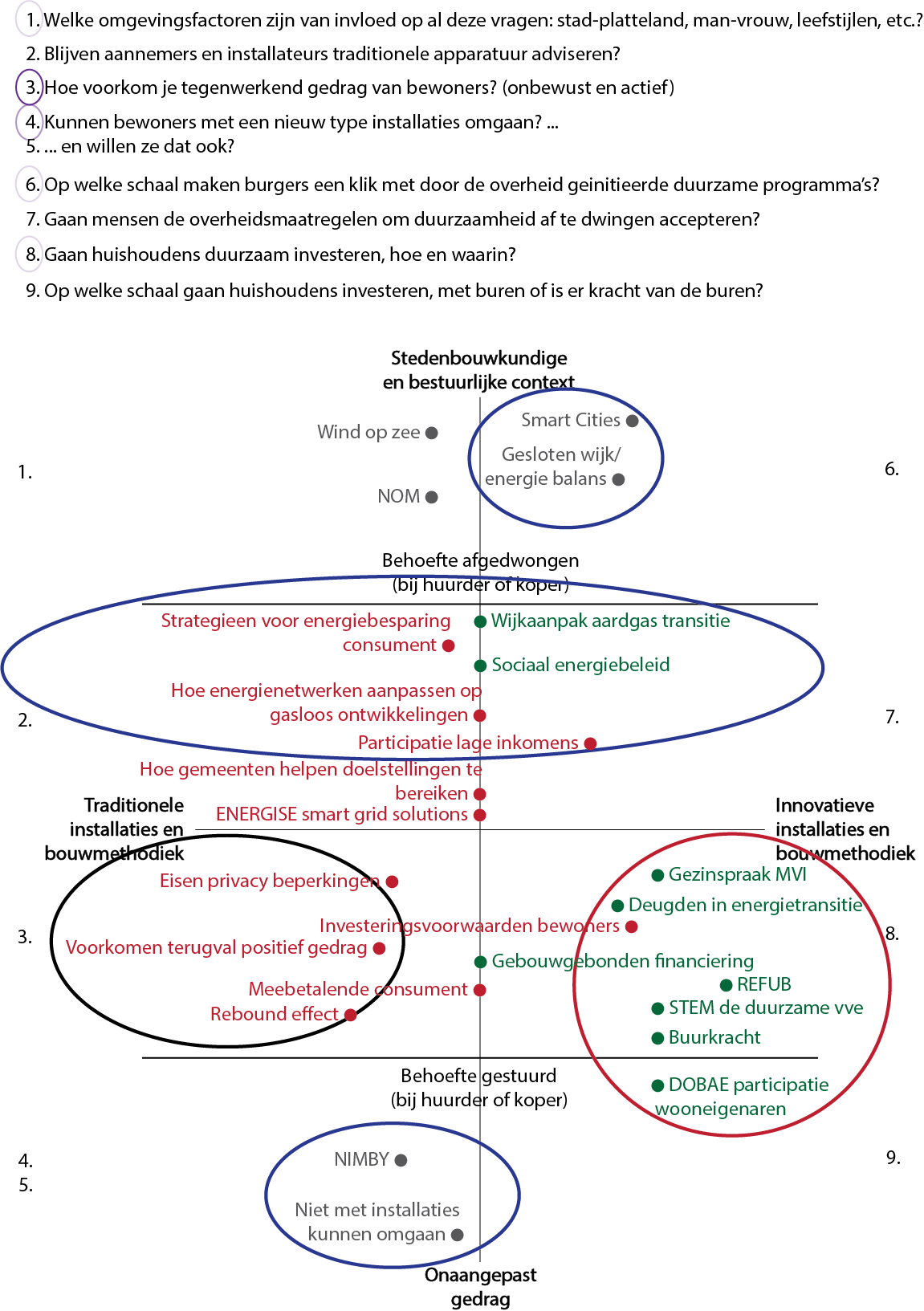Authors: Overtoom, Ortiz, and Sanders.
Reports and documents collected by companies and organisations [in the Netherlands] who committed to the ‘gedrags-community’ were reviewed, based on questions formulated by them, on sustainable behaviour change. These questions were summarised as follows:
A. What is researched in practice, concerning the reduction of energy use in the residential sector?
B. How can this ‘practical’ research inform future campaigns or interventions to reduce energy use?
C. Is there overlap in content with scientific research on energy behaviours?
When the majority of the documents was reviewed, they were also analysed on the type of motivation for energy reduction behaviours, how this reduction would be realised (behaviour or technology focus), and if differences between people were highlighted. This categorisation was based on recurring themes in the documents. Though there are theories available from science about environmental behaviours and motivations, they are sparingly used in the reports and documents. The rebound effect is one example, where the term is familiar in practice, but the reports delivered for the review were from scientific journals.
Regarding predicted energy use versus actual energy use, the reports from practice indicate that it matters how expected energy use is calculated, but also that energy use for older buildings is overestimated, partly because of the household characteristics. Information on how much energy is used by people, can influence their behaviours. This depends partly on the quality of the feedback and the motivation people have to act on the information received. For interventions designed to reduce energy the review shows that it is important that the user group is targeted in the right way, by people who are trusted. Social comparisons can be useful to motivate people to join an initiative, or create more sustainable energy use norms. Sometimes beliefs about groups that use more or less energy are incorrect, for example that it is thought that people living in sustainable housing (grade A) use less energy at home than people living in housing that is not sustainable (grade D or lower). To motivate people to engage in environmentally friendly behaviours, frequent contact helps. Theoretically simple behaviours that would improve energy efficiency, like reducing shower time, are already carried out, and doing more would reduce comfort or require too much of an effort. Investing in sustainable technologies is more likely when trusted people have good experiences, when the benefits outweigh the costs, and when the time is right, for example when the house is renovated anyway. There are differences in how people respond and what motivates them to engage in environmentally friendly behaviours. People living in social housing generally have different heating behaviours than people living in other types housing, men are motivated more by financial benefits than women, and higher educated people think more about how to live sustainably.
The documents reviewed used more qualitative data and case studies than is usual from science. This yields more in-depth information on why people do certain things, but at the same time makes itmore difficult to generalise the results. Using more theories from science could be beneficial. Overall, the documents give good insights in what happens in practice, but it might be useful ifthere would be a database with all these documents to inform practice on what is already done andwhat can be learned before conducting new research.

